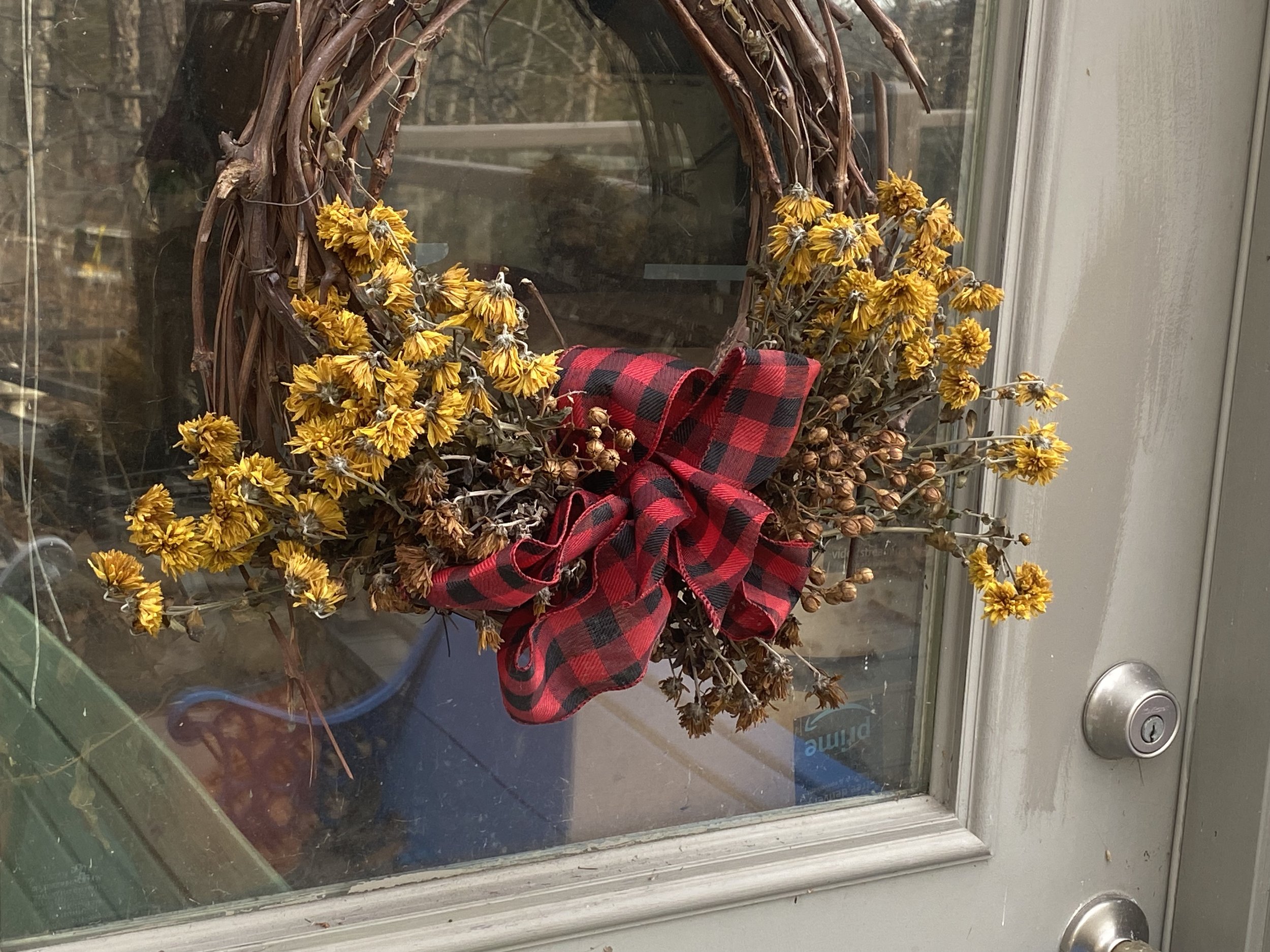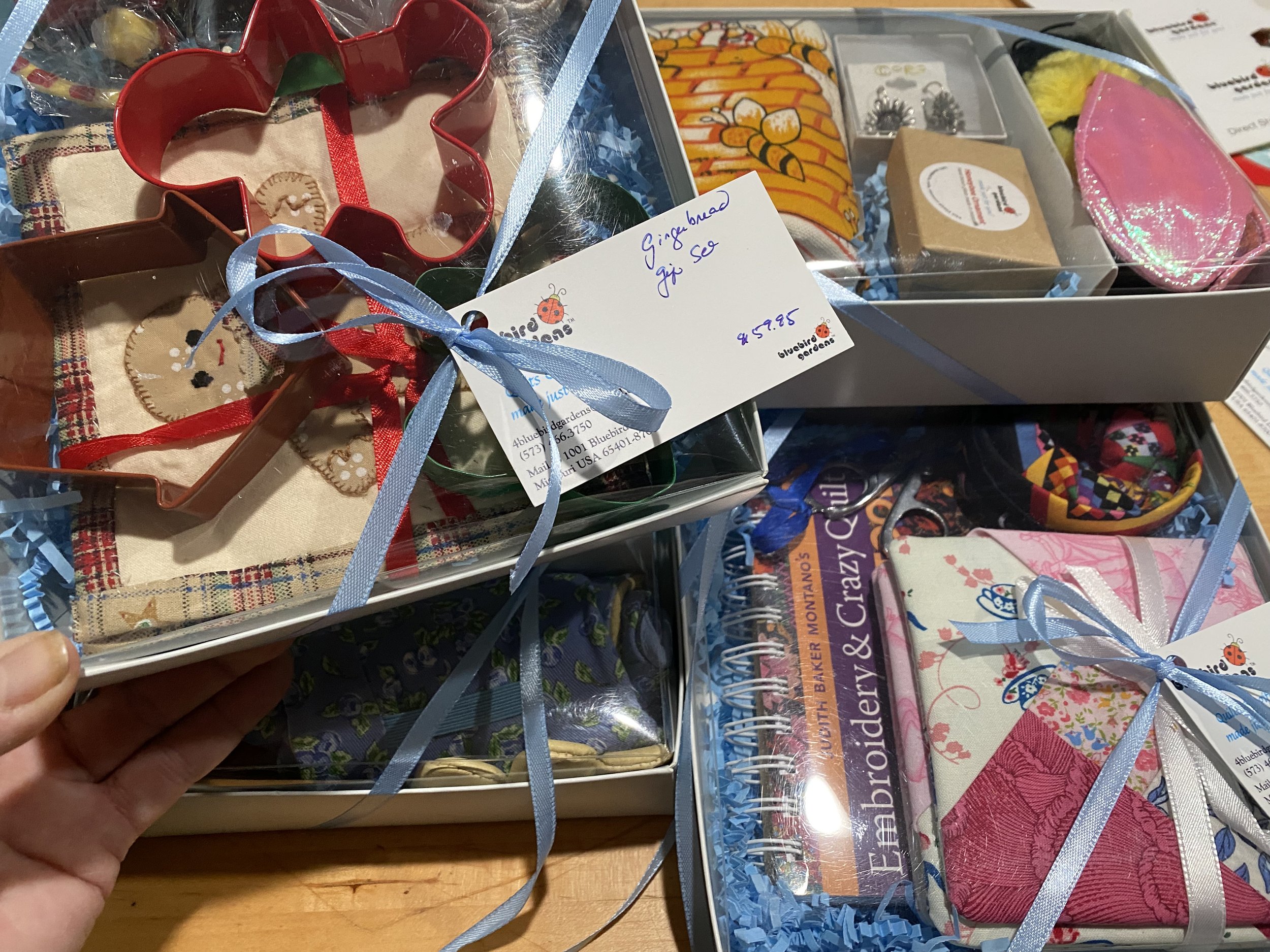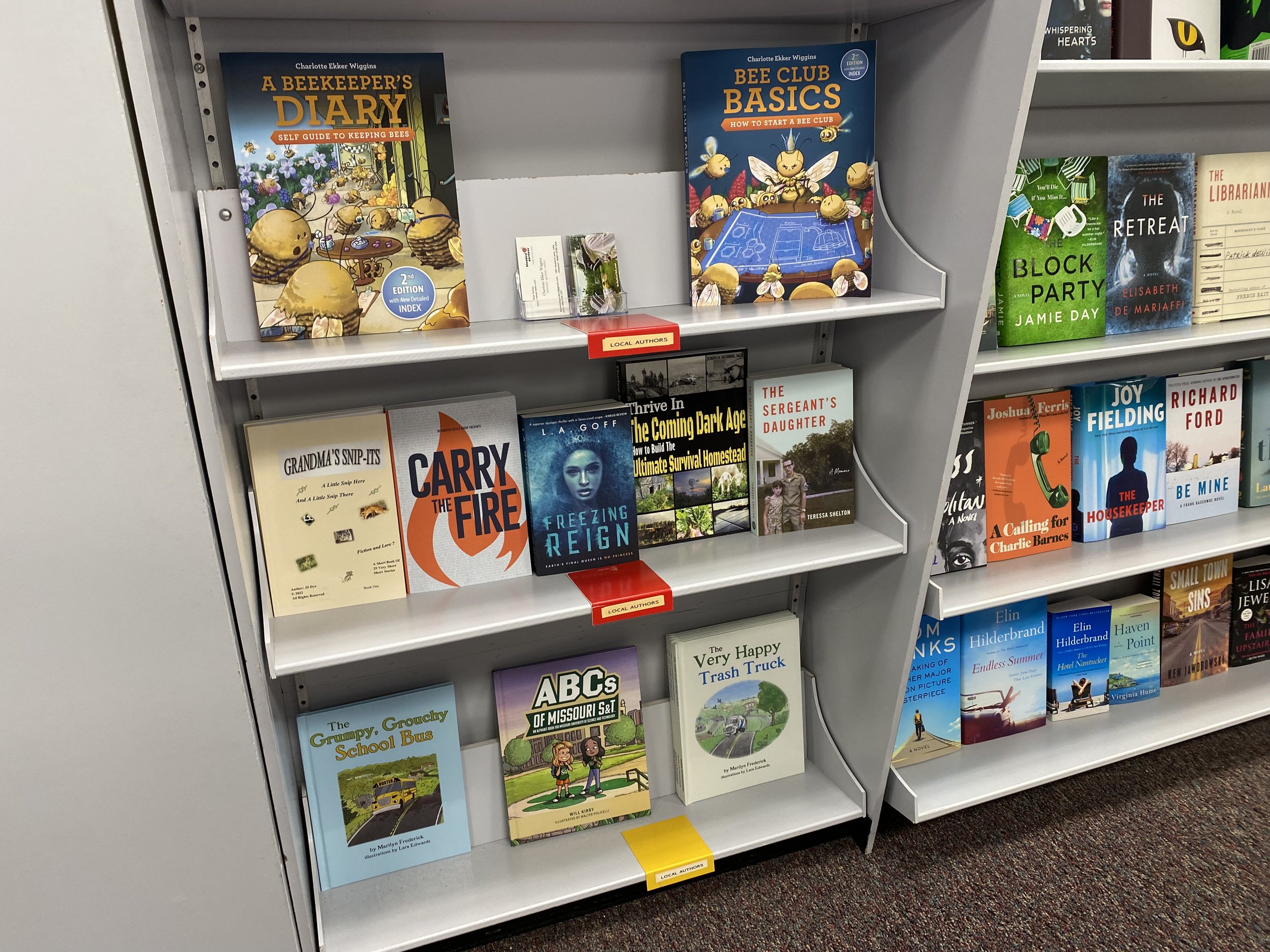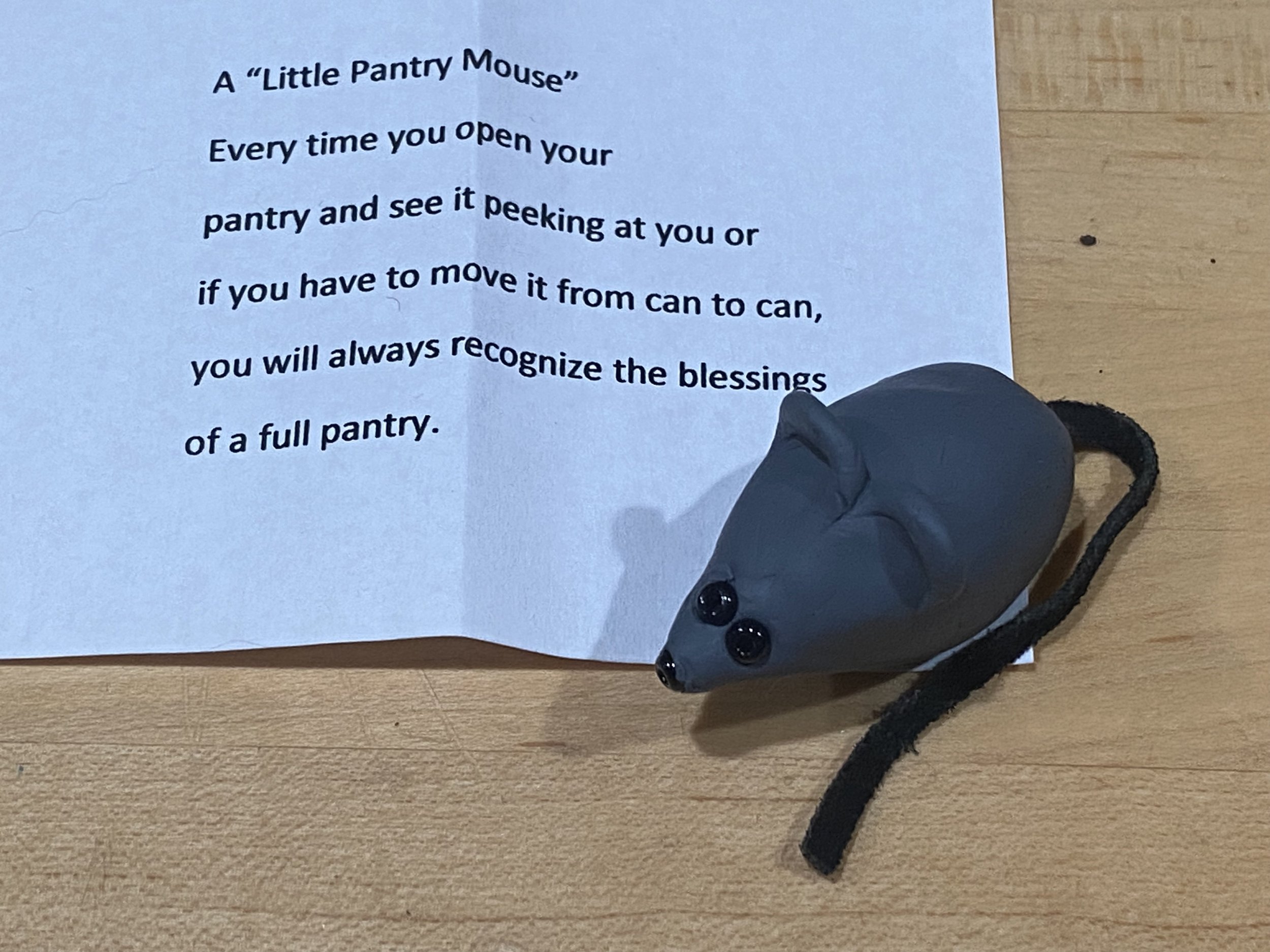Dried Hardy Mums
/dried yellow hardy mums add color to an outside door wreath. (charlotte ekker wiggins photo)
Dried Hardy Mums
Over the years, I’ve saved dried garden flowers for decorative wreaths; sometimes wreaths hanging outside and other times, inside.
I’ve had this wreath hanging in my den for several decades. It gets a refresher every fall after I add dried flowers during the growing season. This reminds me of the past garden and promises new flowers ahead.
dried flower wreath hanging in my den. (charlotte ekker wiggins photo)
Some wildflowers are excellent for drying for door wreaths, from purple coneflowers to lavender to yarrow. The lavender is a nice addition because they maintain their scent.
Seed pods also make for interesting texture assuming I can keep the squirrels out of them.
New Dried Flowers
This year, I added a new favorite dry flower, hardy mums. I was trimming hardy mums I’m wintering over inside my garage and noticed that the yellow ones were nicely maintaining their color.
A pink one also has potential so I will be adding those to a couple of other wreaths that need to be refreshed.
I have dried rose buds, salvia, yarrow and daffodils drying and hanging from garage hooks.
I don’t know why I didn’t think of hardy mums earlier; they are excellent long lasting cut flowers.
Nice to have another option to add color to my wreaths!

















